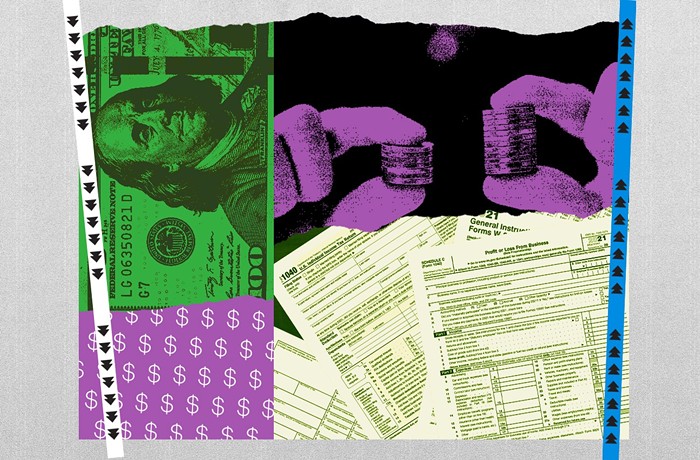
City Councilmember Kshama Sawant’s rush to save the Showbox theater from being demolished was slowed down Wednesday in the murky complexities of city law, but a nearly three hour meeting was dotted with multiple good signs for saving the venue.
The strongest sign of hope came from Councilmember Sally Bagshaw, the chair of Wednesday’s finance committee meeting, when she remarked that the council was in agreement that they needed to find a way to save the Showbox.
“I don’t hear any dissent that we are trying to save the Showbox with the tools that we have available and maybe even the ones we don’t have available yet,” Bagshaw said.
A range of ideas has been proposed for how the venue could be saved since news broke two weeks ago that Vancouver’s Onni Group plan on demolishing the historic theater and replacing it with a $100 million, 44-story building. Sawant’s plan offers what appears the strongest protection for keeping music alive in the nearly 80-year-old building.
Under Sawant’s plan, the nearby Pike Place Market Historical District would be expanded to include the Showbox. That would put the building under the authority of the Pike Place Market Historical Commission, which closely regulates how buildings in the district are both physically modified and how each building is used.
Sawant’s original proposal expanded the historical district beyond just The Showbox location to include 16 additional buildings, including a strip club and three parking lots, but the finance committee passed an amendment Wednesday shrinking the expansion down to include only the theater. If passed, the expansion of the historical district would be on a temporary, 10-month basis, and would need a later vote by the council to be made permanent.
Nathan Torgelson, the director of Seattle’s Department of Construction and Inspections, delivered another piece of good news Wednesday afternoon to Showbox supporters. He said his department preemptively set their next meeting with the Onni Group for Oct. 18, meaning the property’s developer could not gain “vested” property rights until this fall.
“To provide certainty to the public and elected officials, today we schedule an early design guidance pre-submittal meeting, so the applicant could not vest any time before that,” Torgelson said.
Once a developer has gained vested property rights they are only bound by the zoning laws that existed on or before that day. Sawant told the City Council on Monday that vesting could occur before the end of August, which convinced the council to rush the legislation to its finance committee and then back to the full council for a vote within a week.
Bagshaw said she would like to slow down the process now that additional time has been assured.
“Now that I feel there’s a guarantee that we don’t have that happen it will be prudent to take some more time,” Bagshaw said.
The council will still consider the ordinance at its full council meeting on Monday, although they could decide to further delay the law.
Mary Bacarella, the executive director for the Pike Place Market Preservation & Development Authority, which owns several of market buildings and works to maintain the historic market’s function, said her organization was concerned about how quickly the expansion was moving.
“It’s not about the goal it’s about how fast we are going... and what the implication moving forward is,” Bacarella said.
The historical value of the Showbox building has been questioned by some during the last two weeks. A 2007 survey paid for by the city did not recommend preserving the building because it appeared to lack "sufficient physical integrity to convey architectural and/or historic significance." The building has also sat empty for different periods of its life and was even a furniture store at one point.
Eugenia Woo, the director of preservation services for the nonprofit Historic Seattle, argued Wednesday that even with its checkered history the venue still qualified as historically relevant to the city and the nearby Pike Place Market.
“The building was built in 1917 and was called the Central Public Market and was built by Charles and Emma Frye, you all know the Frye Art Museum,” Woo said. “The Pike Place Market did not exist in a bubble… it’s all part of a larger ecosystem so the building where the Showbox is is part of that history.”
Historic Seattle officially filed a nomination for the Showbox theater to be given a landmark designation Wednesday afternoon, according to Erin Doherty, a landmarks coordinator for the city's Office of Neighborhoods. A landmark designation is distinctly different than Sawant’s proposal to expand the Pike Place Market Historical District and even if the building won a designation it would not necessarily save the theater. Landmark designations protect some of the physical attributes of the building but do not protect how the building is used, allowing the developer to change the building from being used as a theater.
Several other options for preserving the theater were brought up at Wednesday’s meeting, including seeking private investors who could purchase the building and set up a nonprofit management company. A similar situation happened at the Central District’s Washington Hall, a historic building that was built as a Masonic lodge and hosted performances from Jimi Hendrix, Duke Ellington, and Billie Holiday. Historic Seattle purchased the building in 2009 when a developer was planning on demolishing and redeveloping the land.
Woo said Historic Seattle would be open to a similar situation with the Showbox if there were investors willing to fund the project.
“I’ve said, don’t write the obituary for the Showbox yet. There’s always another path forward… and I think we need to explore all options and if the current owner is interested in exploring that idea of a potential other investment group or buyer we would like to see that happen,” Woo said Wednesday.
Councilmember Lisa Herbold proposed the idea of bringing the Showbox theater into the city’s Historic Theater District, which includes the Moore Theatre and the Paramount Theatre among others. The Showbox would need to first be given landmark status and be owned and managed by a nonprofit organization to qualify for that district.
Sawant implored the council Wednesday to pass her temporary expansion of the Pike Place Historical District, allowing the council to protect the beloved venue until a permanent solution could be found.
“It sets up an interim boundary and it can expire after the legal time expires and within that time frame if we have this really rosy scenario where Onni wants to preserve and own it, then OK that’s fine,” Sawant said. “But technically speaking, passing this ordinance on Monday doesn’t preclude any of the other options, they are still on the table.”
Even with a council in support of saving the Showbox, stopping an international developer from building a planned $100 million property, which sits on land currently appraised for over $12 million, is going to be an uphill fight. Seattle's hot real estate market and the developer's deep pockets could lead to long lawsuits over attempts to stop them from making millions in profits with their property.
But Wednesday's meeting at least offered a sign that the city's highest legislative body is ready to fight for the venue.



















